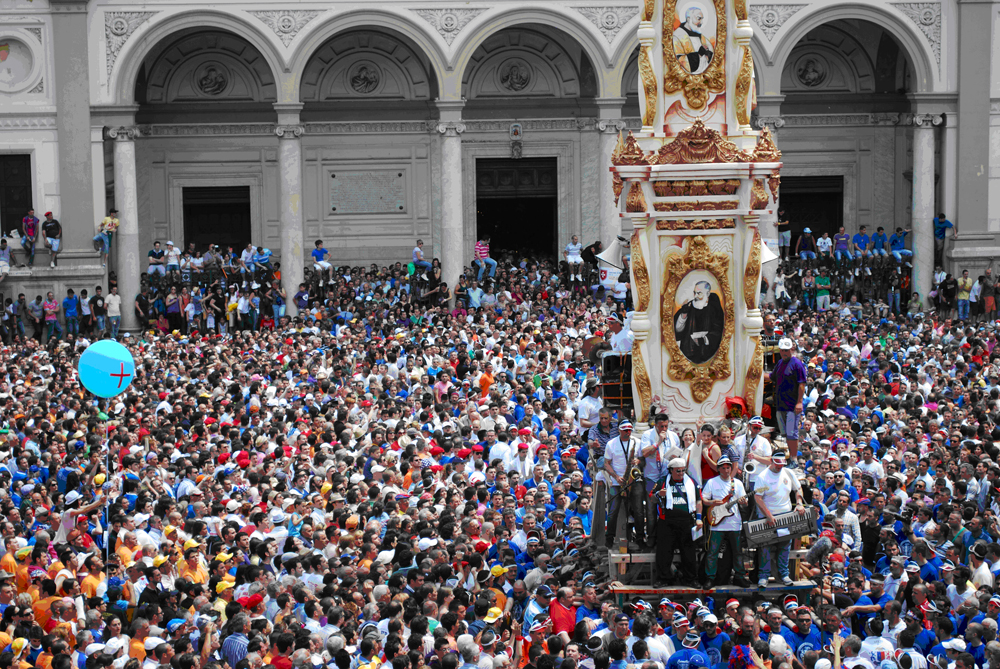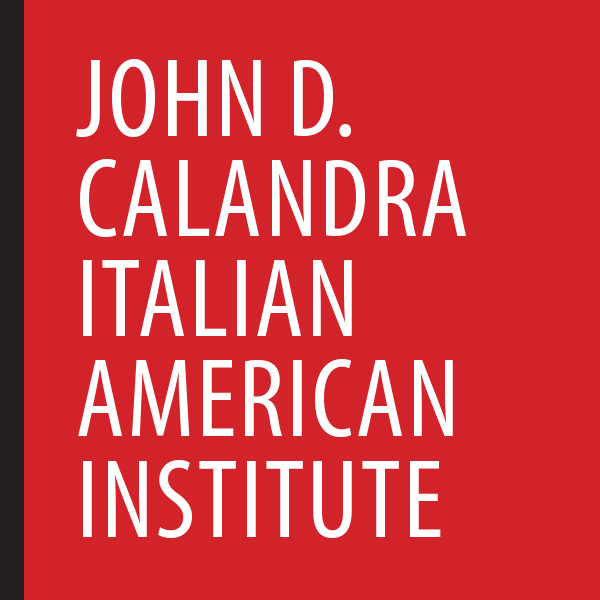
Migrating Towers: The Gigli of Nola and Beyond
The John D. Calandra Italian American Institute is happy to present a photographic exhibition from the collections of the Museo Etnomusicale I Gigli di Nola and the Archivio della Contea Nolana. The exhibit was curated by Katia Ballacchino (Università di Roma, Sapienza) and Felice Ceparano (Museo Etnomusicale I Gigli di Nola).
La festa dei gigli in Nola (Naples province), Campania, is a dramatic reenactment of the safe return of St. Paulinus (354-431) from slavery. The sacred narrative recounts that joyous townspeople greeted bishop Paulinus by waving gigli (“lilies”) and by the 19th century, spires representing these flowers and reaching heights of 25 meters (82 feet) were introduced to the annual feast. The eight gigli towers are complex architectural wooden structures built by local artisans, decorated with elaborate papier mâché facades featuring religious, historical, or topical themes. A musical band rides on each individual giglio platform and provides the sonoric accompaniment as the structure is “danced” through the streets.
Since 1903, Italian Americans have sponsored giglio feasts in the New York City metropolitan area. This annual tradition continues in Williamsburg, Brooklyn, and East Harlem, Manhattan.
The exhibition was originally displayed at the Watts Towers Arts Center in Los Angeles as part of the “Watts Towers Common Ground Initiative: Art, Migrations, Development,” a conference and a city-wide festival coordinated by Dr. Luisa Del Giudice. It was made possible by a grant from the Italian Consulate of Italy, Los Angeles, and the assistance of the Watts Towers Arts Center and its director Rosie Lee Hooks. Additional photographs by Cono Corvino.

Recent Comments